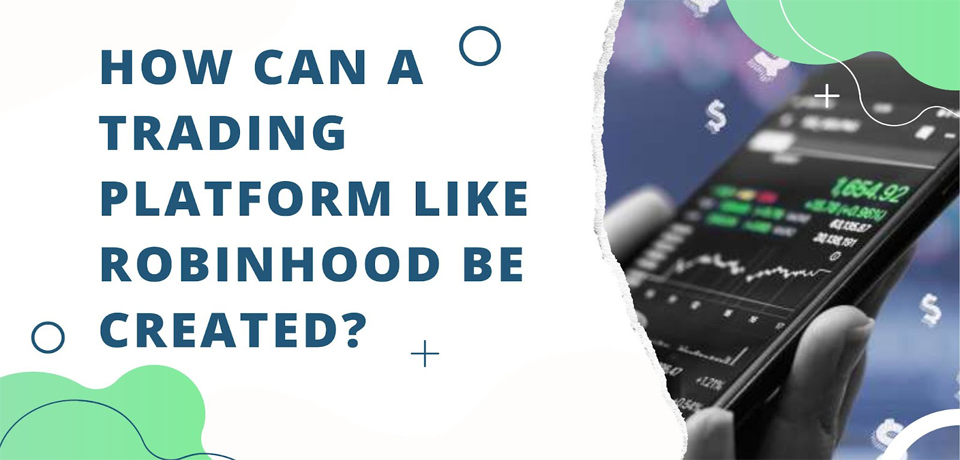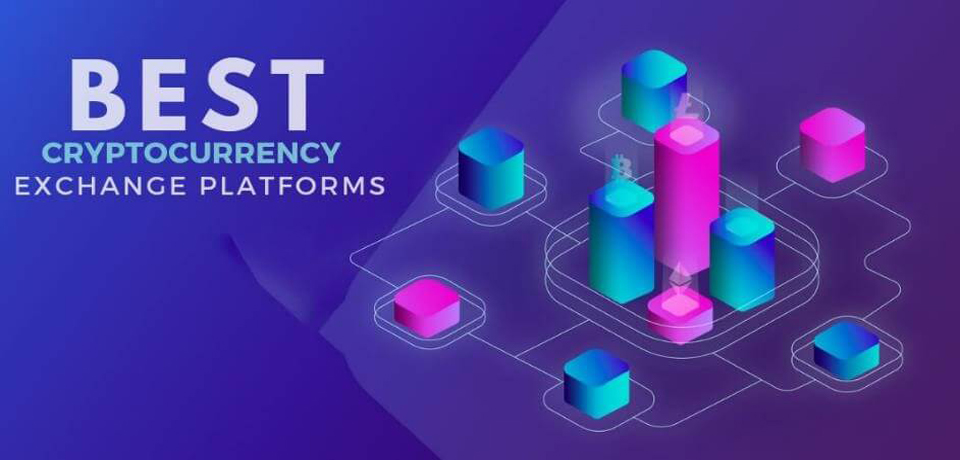Even though investing is dangerous and can occasionally result in significant losses, using a stock trading app like E-Trade or Robinhood allows users to avoid additional costs and gain access to a variety of useful investment tools. In the first place, we attribute this progress to technological innovation, fresh trends, and opportunities that are not only spurring advancements but also raising competition levels across a wide range of industries, including financial technology (fintech). If you decide to create a trading platform, you should be aware of your competitors and consider what factors contributed to their success.
Describe FinTech.
You are already a part of this multi-billion dollar sector if you have ever used your phone to pay for goods or services, moved money using an app (such as trading software), or tagged your bank statements online (for client, supplier, salary, or tax payments).
The term “fintech” broadly refers to a wide range of goods, innovations, and business strategies that influence the financial services sector. Despite the fact that this phrase is currently being used everywhere, it is in no way a buzzword. Instead, it is a significant commercial opportunity that is arising from the existing financial markets’ disruption and motivating companies to create trading platforms.
Fintech is not just another sci-fi dream, either. Virtual currencies, robo-advisors, crowdfunding platforms, and cashless transactions are a few examples of real-world applications that back up the theory. These kinds of technological advancements are examples of breakthrough technologies that are now altering the fintech industry.
Customers can be introduced to all of these unique items, technologies, and models in the most practical way possible by downloading iOS and Android applications directly to their mobile devices.
A Trading App is What?
Trading applications, like all other apps supported by mobile devices, are made to help users be more productive and efficient whenever they complete a task in their personal or professional lives. Particularly for stock trading, apps are developed to assist people looking for reliable trading solutions. The desired product must support their specific investing strategy and fit their spending plan. Fortunately, fintech is ready to assist you in giving smartphone owners completely new trade experiences and capabilities.
Occasionally, commissions and several other trading fees could significantly increase the costs for average traders. Nobody wants to pay more, though. People would like a free stock trading app that would produce respectable returns. Therefore, investing apps that are created with the end user in mind ought to aid in reducing extra charges or possibly doing away with them entirely.
First and foremost, fintech business models should benefit consumers and help full-service consumer finance companies thrive. The mobility of trading platforms also enables traders to keep an eye on the stock market constantly. Because transactions may be completed at any time, there are an increasing number of stock trading apps available.
How Investing and Stock Trading Apps Work
Fintech, in theory, is all about following the right procedures while handling money, including saving, borrowing, lending, investing, spending, and even protecting it. The technology is designed to help people manage their financial affairs more effectively. In other words, the way fintech will seem on your device entirely relies on the industry sector an application belongs to.
The following are these segments:
- funding and crowdsourcing
- payments for wealth and asset management
- financial services, insurance
- insurance services
This is merely a condensed list that suggests the existence of more portions that we will exclude for the time being. What matters most in this situation is that stock market and investing applications are designed to enhance and automate the provision of financial services in the financing and crowdfunding sector. Actually, investment and stock trading applications are complete tools that provide constant market access. As a result, a user can track changes in market activity, obtain real-time stock prices, and more.
This presumption makes perfect sense.
- First of all, compared to individuals who represent prior generations, they are more likely to be familiar with cutting-edge technologies. Because Gen Xers and Baby Boomers, who are normally less interested in learning more about the specifics of new opportunities developing in the IT industry, are less likely to do so, Millennials, rather than Gen Xers or Baby Boomers, have a dominant position on the market.
- Second, fintech just does not solve the issues facing Gen Xers and Baby Boomers. Millennials are accustomed to using their portable gadgets to carry out routine chores. To put it another way, when it comes to managing their life, fintech consumers prefer digital platforms.
- The flip side of the coin is that by creating stock trading apps, businesses expose young people to finance. Applications allow users to execute trades and make investments without being charged a fee for each one, in contrast to traditional brokerages that continue to charge investors and traders fees on a regular basis. We’ll cover how exactly stock market apps are made money later on in this article.
Best Stock Trading Applications
Your wealth could be at risk from any investment, so it’s critical to be ready. You can’t pick any app if you want to trade options or a pre-trade stock. There are many excellent brokerage programmes on the market right now, but you should pick the stock trading software that best fits your requirements and interests.
There are so many apps available that it can be overwhelming to know where to start. So, as a starting point, think about these top 3 stock trading applications, together with their primary functions and standard fees:
Robinhood
- no account minimum
- Trading of cryptocurrencies
- accounting for margin
- streamlined design
- Only individual taxable accounts are supported
Premium features are another way to monetise an online trading software. There’s a good chance that some of those millions of users are willing to pay more to get features that paid stock trading software doesn’t provide. These features enhance the user experience for online traders while also generating income for the applications. The case of Robinhood Clone Gold serves as an illustration of this monetization strategy.
A cutting-edge method of engaging with the stock market is Robinhood Gold. It opens up more options by enabling consumers to trade on margin, use extended trading hours, and more with a minimum balance of $2,000.
Technologies and Equipment Needed to Create a Profitable Trading Platform
A trading app goes through a number of stages throughout development, including:
- Formulation of a marketing plan based on thorough market research
- Selecting a platform, creating an architecture for a stock trading application, and performing testing and quality assurance
Investment success over the long term requires trustworthy trading software. Regrettably, trading software can struggle to manage heavy workloads of extensive automated activities. Building an automated rules-based mobile trading application employing multilingual third-party APIs will be a smart move for this reason. Go ahead and select a programming language or protocol from the extensive list of useful options!
Characteristics of the Most Well-known Stock Market Apps
Although it is currently free for users to sign up as investors and begin buying and selling stocks using applications, a trading platform like E-Trade or Robinhood still needs to include premium services and take other necessary steps in order to produce better overall profitability. Let’s examine the fundamental capabilities that E-Trade, Robinhood, and other free stock trading applications have in more detail.
- Web-based dashboard. A user can view sortable data on an “adaptive portfolio dashboard,” which enables goal tracking for the purpose of progress and user experience enhancement.
- Charts and stock quotations are streamed in real-time. This feature can also be seen on a dashboard. Additionally, data there can automatically update once per second in modern systems to produce the most precise analysis, price trends, and effective methods.
- Stock scanners and screeners. For stock selection, screening must yield reliable results, such as the aforementioned charts and quotes that were created utilising a variety of descriptive, technical, and fundamental criteria.
- Keep lists. They typically enable stock monitoring to plan future investments and display to customers changes in price, volume, bid price, and percentage. Watch lists are a crucial component of thorough stock research.
- market news recently. Making well-informed financial decisions is essential. Exactly what helps with that is timely and pertinent news that is tailored to the user’s watchlist and is readily available on their stock trading app.
- Calendars as well as stock alerts. Users look for 24-hour availability and real-time tracking in stock trading apps. It is crucial to stay current with a range of warnings, of course.
What is the Price of Developing a Stock Trading App?
These are the impact considerations. However, if a user only requires a minimal set of capabilities in an application, the development process, quality assurance, and app design creation could all take up to 1000 hours. $35 is the typical hourly rate, so multiplying the total cost by that number yields $35,000.
Conclusion
Stock trading applications are becoming more popular now that millennials are the driving force behind a new consumer revolution. Our financial investment decisions are mediated today by free stock trade apps. Just two of the many available free stock trading programmers are Robinhood and E-Trade. But there is no denying the popularity these certain apps have.



